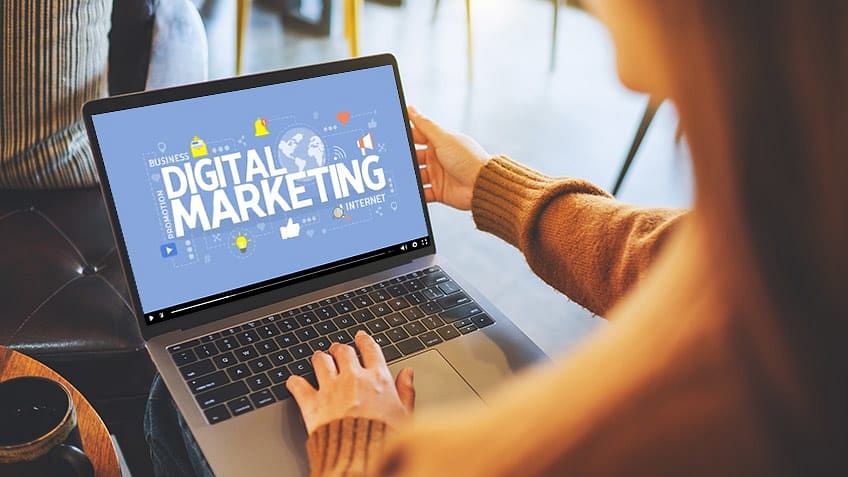Enhance Customer Experience and Drive Website Traffic With Receptive Website Design
In today's electronic landscape, where customers are accessing web sites from a wide variety of gadgets, receptive website design has become more crucial than ever before. With its capacity to adjust and perfectly change to different screen sizes, responsive style not just enhances individual experience but likewise drives website traffic to your web site. Why is this design strategy so essential? How does it increase user interaction and increase site web traffic? In this conversation, we will check out the crucial elements of efficient responsive layout, dive into the most effective practices for its application, and discover the secrets to boosting individual experience while driving more traffic to your web site.
Why Receptive Website Design Issues
Receptive internet design is a crucial facet of modern-day internet growth as a result of its capacity to guarantee ideal user experience across various devices and screen sizes. With the expansion of smartphones, tablet computers, and other smart phones, it has become essential for sites to adjust and provide seamless functionality no matter the gadget being used.
The primary factor why receptive website design matters is that it permits users to have a regular and pleasurable surfing experience, no matter the device they are making use of. A receptive web site instantly adjusts its material, design, and design elements to fit the screen dimension and resolution of the device, guaranteeing that users can quickly navigate and communicate with the internet site with no hassle or disappointment.
In addition, responsive web design also plays a significant function in seo (SEO) Internet search engine, such as Google, prioritize sites that are mobile-friendly and responsive in their search engine result. By incorporating responsive design principles, internet sites can improve their visibility and position, bring about raised natural website traffic and prospective clients.

Boosting User Interaction Through Responsive Layout
Optimizing user interaction is a vital goal of responsive layout, as it guarantees that individuals can conveniently accessibility and connect with internet site web content on any kind of tool. With the boosting use of smartphones and tablet computers, it is vital for websites to adapt to different display sizes and resolutions. Responsive design enables internet sites to immediately adjust their design and content to supply a seamless individual experience across devices.
One of the major methods receptive style increases individual involvement is by reducing tons times. With a receptive site, users do not have to await separate mobile variations to load, resulting in quicker accessibility to content. This improved rate causes higher individual contentment and urges them to invest more time on the site.
Additionally, responsive design enhances user engagement by improving navigating and interface (The Ad Firm digital marketing). When a website is created responsively, buttons and food selections are optimized for touch interactions, making it easier for customers to browse and engage with the website on their mobile tools. This user-friendly and easy to use experience keeps users engaged and encourages them to discover even more of the internet site
In addition, receptive layout enables better content presence and readability. By adjusting the format and typeface sizes to various gadgets, responsive websites make certain that individuals can conveniently check out and understand the web content. This boosts individual interaction by lowering the requirement for zooming or scrolling to review the message.
Enhancing Site Web Traffic With Responsive Web Layout
With the expanding popularity of mobile phones, having a website that is responsive to different display dimensions and resolutions is important for driving raised web traffic. In today's digital landscape, customers are accessing web sites from a selection of devices such as smart devices, tablet computers, and computer. Each of these gadgets has different screen dimensions and resolutions, and if your site is not designed to adjust to these variants, it can cause a poor customer experience and a loss of possible traffic.
Responsive website design makes sure that your internet site looks and works optimally across all tools. By utilizing versatile grids, liquid images, and media questions, receptive design allows your web site to immediately readjust its web content, navigating, and layout to fit any kind of screen size. This means that customers will have a seamless surfing experience despite whether they are utilizing website here a big desktop or a little smart device computer system.
Trick Elements of Reliable Receptive Layout
Reliable responsive style includes a number of crucial elements that make sure a seamless individual experience throughout different tools. One of these components is versatile grids and formats. By utilizing family member devices like portions instead of fixed units like pixels, developers can create formats that scale and adjust to fit different display sizes. This permits material to be displayed in a legible and aesthetically attractive manner on any kind of gadget.
One more essential aspect is media inquiries. These permit developers to apply various designs and designs based upon the characteristics of the individual's gadget, such as display dimension and alignment. By utilizing media questions, developers can enhance the discussion of content for every tool, guaranteeing that it is readable and conveniently available.
Responsive pictures are additionally critical in reliable receptive design. Photos that are also large can decrease page tons times on mobile gadgets, while photos that are as well small may appear pixelated on bigger displays. By utilizing methods such as responsive photo resizing and lazy loading, designers can ensure that images are properly sized and maximized for each and every device.
Lastly, reliable receptive design involves a mobile-first strategy. This indicates prioritizing and designing material for mobile gadgets first, and after that improving the layout and increasing for bigger displays. This strategy makes sure that one of the most important content is conveniently obtainable on smaller displays, while still providing an abundant experience on larger tools.
Best Practices for Implementing Responsive Web Design
Executing responsive website company website design needs careful consideration of different ideal practices to guarantee an optimal customer experience throughout different tools. When applying receptive internet layout., below are some key best techniques to follow.
Firstly, it is essential to prioritize mobile individuals. With the increasing dominance of mobile devices, designing for mobile-first has come to be vital. Start deliberately for smaller sized displays and after that progressively improve the format for bigger screens.

Another crucial finest practice is to maximize photos for various display resolutions. Huge pictures can decrease the packing time of your website, particularly on mobile devices with slower links. Usage responsive images that can be resized based upon the device's screen resolution to boost performance.
Furthermore, test your internet site on different tools and screen sizes to ensure a smooth and consistent experience. There are various testing tools available that can assist you identify any type of problems and make required adjustments.
Finally, focus on functionality and access. Guarantee that your web site is very easy to navigate, with clear and succinct web content. Ensure that your web site comes to individuals with impairments and adheres to access guidelines.
Conclusion
In verdict, responsive web style plays description a vital function in enhancing user experience and driving traffic to sites. By adopting receptive design concepts, internet sites can ensure ideal watching experiences across various devices, leading to enhanced user involvement.
Optimizing customer engagement is an essential objective of receptive layout, as it makes certain that customers can easily gain access to and engage with internet site material on any type of device. Receptive layout makes it possible for sites to immediately readjust their layout and material to supply a smooth user experience across tools.
Additionally, receptive design improves user involvement by boosting navigation and user interface.Responsive pictures are likewise important in reliable receptive layout. By adopting responsive layout concepts, internet sites can ensure optimal seeing experiences across various gadgets, leading to raised user involvement.